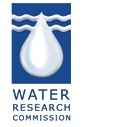IGCP 565 Project Workshops

|
IGCP 565 Workshop 5: Water Security for Africa: Bringing Together Research, Monitoring, and Managing
October 29-30, 2012
Johannesburg, South Africa |


|

|
Integrating hydrogeodetic data and models: towards an assimilative framework
Jürgen Kusche, Annette Eicker, Maike Schumacher
Astronomical, Physical and Mathematical Geodesy Group, Institute of Geodesy and Geoinformation, University of Bonn, Nußallee 17, D-53115 Bonn, Germany
Hydrogeodesy contributes several valuable monitoring tools for hydrology and hydro-meteorology, utilizing geodetic sensors that were typically designed for other purposes. Time-variable gravity from the GRACE mission has found numerous applications. Lake and river stage is now routinely derived from radar altimeter measurements in many locations, and tropospheric water vapour as observed by many geodetic techniques is being used for NWP and climate research. Surface deformation from GPS may be related to pore pressure changes in the aquifer as well as to crustal elastic response to the changing weight of stored water. Seen that both hydrological and land surface models come with their own limitations, due to limited physical or conceptual representation of the real world and to uncertainties in climate forcing data, it appears natural to call for integration of hydrogeodetic data sets with models. While model calibration generally improves model realism and the ability to forecast, data assimilation creates a compromise between physically consistent simulation and observed reality. However, while assimilation of remote sensing data is not new to developers of land surface models, few attempts have been made to integrate hydrological models with hydrogeodetic data. We will describe a roadmap for integrating hydrogeodetic data and hydrological models in an assimilative framework. Using the WaterGAP Global Hydrological Model (WGHM) as an example, we investigate the sensitivity of model parameters with respect to GRACE maps of time-variable gravity. We show how, from a GRACE perspective, the model effectively disaggregates total water storage change into several compartments.
|



